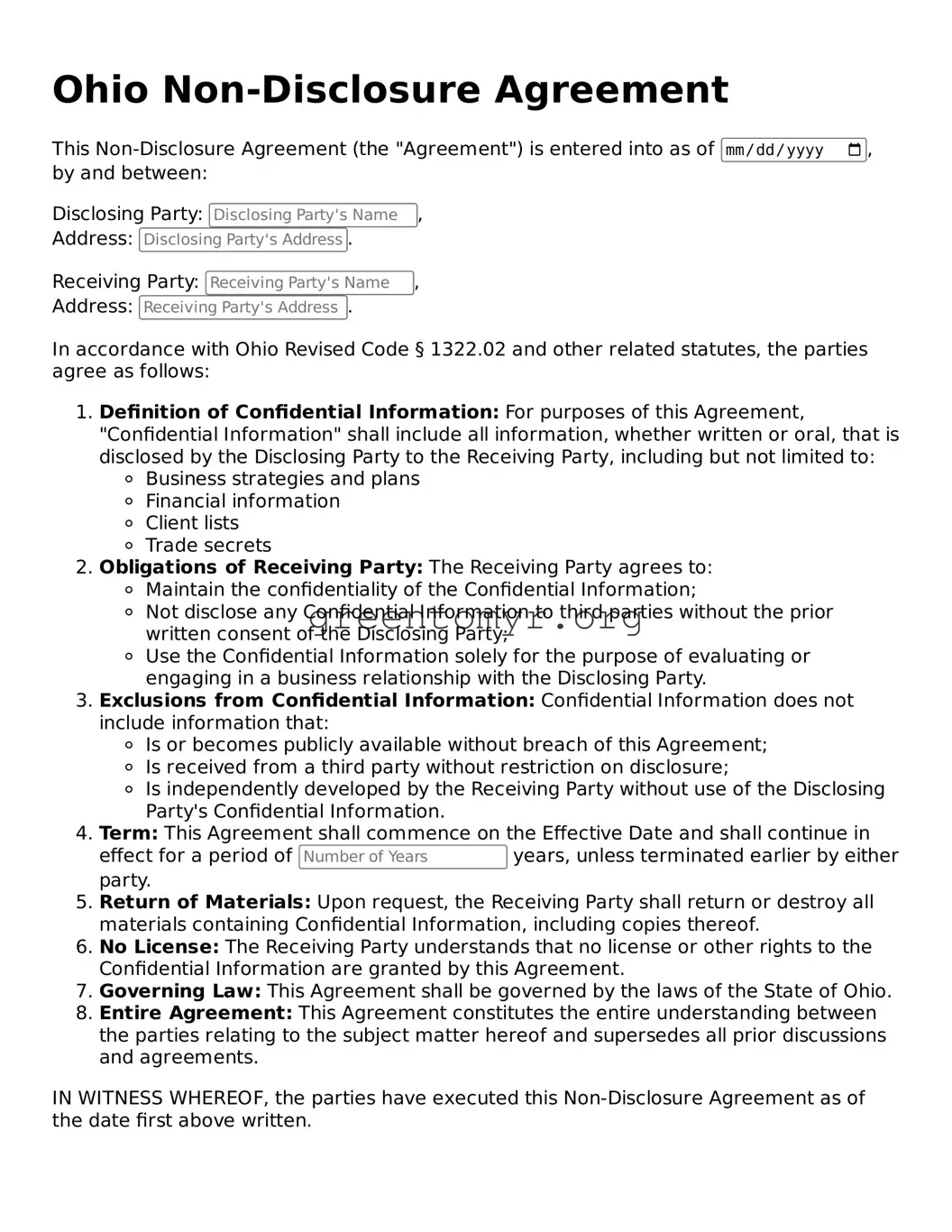What is a Non-Disclosure Agreement (NDA) in Ohio?
An NDA, or Non-Disclosure Agreement, is a legally binding contract designed to protect sensitive information shared between parties. In Ohio, this agreement helps ensure that confidential information, trade secrets, and proprietary data remain secure and do not get disclosed to unauthorized persons. This agreement is particularly important for businesses looking to protect their intellectual property while engaging in discussions with potential partners, employees, or contractors.
Who can use an NDA in Ohio?
Any individual or business that wishes to safeguard confidential information can utilize an NDA in Ohio. Common users include:
-
Businesses sharing trade secrets.
-
Startups discussing ideas with investors.
-
Employers providing sensitive training information to employees.
-
Consultants who require access to proprietary information.
Regardless of the context, as long as sensitive information is at stake, an NDA can be an essential tool.
What are the essential elements of an Ohio Non-Disclosure Agreement?
An effective NDA typically includes the following key elements:
-
The definition of confidential information.
-
The obligations of the receiving party regarding confidentiality.
-
The duration of the confidentiality obligation.
-
Exclusions from confidential information (e.g., publicly available information).
-
Consequences of breach of agreement.
Including these components helps to clarify the expectations of both parties and reinforces the legal protections provided by the NDA.
How long does the confidentiality obligation last in an Ohio NDA?
The duration of confidentiality obligations can vary based on the agreement's terms. Generally, NDAs specify a time frame during which the receiving party must maintain confidentiality. This period often ranges from two to five years, but it can be shorter or longer depending on the involved parties’ needs and the nature of the confidential information. In some cases, certain information may require indefinite protection.
Can breach of an Ohio NDA lead to legal consequences?
Yes, breaching an NDA can lead to serious legal consequences in Ohio. If a party fails to uphold the terms outlined in the agreement, the affected party may take legal action. This could include seeking monetary damages or injunctive relief to stop further disclosures. Courts will typically consider the intent and impact of the breach when determining the outcome.
Do I need a lawyer to create an NDA in Ohio?
While you can draft an NDA without legal representation, consulting with a lawyer is highly recommended. A legal professional can help ensure that the agreement is tailored to your specific needs, compliant with Ohio laws, and comprehensive enough to cover all potential scenarios. Their guidance can be invaluable in addressing any particular nuances in the agreement.
Are there any specific laws governing NDAs in Ohio?
Ohio does not have a specific statute regulating NDAs. However, they are generally enforceable under contract law principles. It's important for parties to follow basic principles of contract formation, such as mutual consent, consideration, and a lawful purpose. Additionally, NDAs engaging with trade secrets must align with the Ohio Uniform Trade Secrets Act for added protection.
